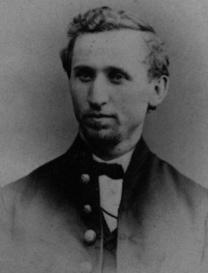Scenes from the Vale of Neath
The Lewis family lived in the Neath Valley (or Vale of Neath - Cwm Nedd) in South Wales from the 18th century until at least the mid 19th century.
Our earliest known Lewis ancestors, David and Ruth, lived near Crynant in the late 1700s. Their son, Evan Lewis and his wife Anne lived in Aberpergwm, in the upper Neath valley, near Glyn Neath in the 1820s and 1830s.
Evan's son, David,lived in Pwllfaron at the time of his marriage in 1838. He and his wife Hannah eventually settled in Resolven. David's son, Richard Lewis, was born and grew up in Resolven, until the Lewis family emigrated to Pennsylvania in the early 1850s.
All of these generations of the Lewis family belonged to the parish church of St. Catwg in Cadoxton-juxta-Neath.
•Parish of Cadoxton Juxta Neath - St.Catwg`s
The Vale of Neath is very scenic, and has long been the subject of paintings and photographs.
•Tours through the Vales of Glamorgan, paintings by Thomas Horner, 1819. Pictures 1-16 are a tour up the Neath Valley from the sea to Pont Neath Vaughan (Pont Nedd Fychan).
•Landscapes of Wales, Glamorganshire Images 12-17 show the Vale of Neath. (from the National Library of Wales Welsh Landscape Collection - see link for waterfalls of the Vale of Neath)
•Waterfalls of the Neath Valley
•Waterfall walks in the Vale of Neath
A prominent feature of the Neath Valley is the Neath Canal, completed in 1795. Today only two miles of the canal, near Resolven, are open to traffic.
•The Neath Valley and the Neath & Tennant Canals (map and photo tour)
•Neath and Tennant Canals (history)
•Photos of Neath Canal (photo tour)
•Photos along the lower Neath Canal
Legend has it that King Arthur sleeps beneath Craig y Ddinas (Dinas Rock) near Glyn Neath at the head of the Neath Valley.
•Engraving of Craig-y-Dinas, 1830
•Dinas Bridge, by Thomas Horner, early 19th century.
•The Treasure of Craig-y-Ddinas (story)
Other Vale of Neath Links
•Official Neath-Port Talbot web site
•Neath, Glamorgan images and history (Brian Wagstaffe's site)
•Items from the Neath Museum (Gathering the Jewels)
•Vale of Neath Railway
•Images of Wales (John Ball's site)
•Cadoxton-juxta-Neath GENUKI page
Read the rest of this post.



